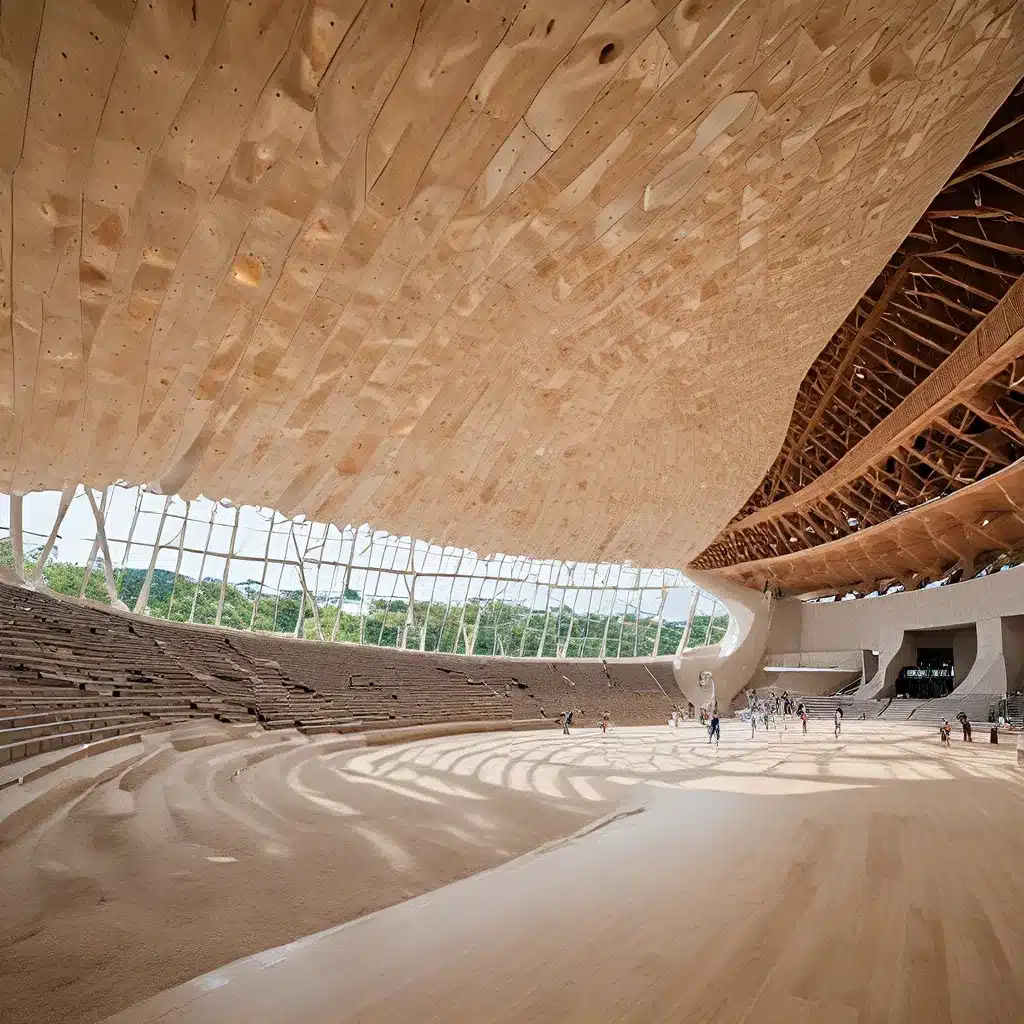
The Yoyogi National Gymnasium, a pinnacle of architectural innovation, stands as a testament to Japan’s rich design heritage and commitment to excellence. Conceived by the renowned architect Kenzo Tange, this remarkable structure was built to host the 1964 Tokyo Olympics, ushering in a new era of athletic grandeur and architectural ingenuity.
The Visionary Design
At the heart of the Yoyogi National Gymnasium’s captivating design is Tange’s unwavering vision to create a harmonious blend of function and form. Inspired by the principles of traditional Japanese architecture, the gymnasium’s striking suspension roof structure represents a profound departure from conventional stadium design.
The gymnasium’s roof, supported by a series of cables and steel frames, appears to float effortlessly above the building, creating a sense of weightlessness and elegance. This innovative approach not only served a practical purpose by providing a vast, column-free interior space but also showcased Tange’s masterful command of structural engineering.
Architectural experts praised the Yoyogi National Gymnasium’s design for its ability to harmonize with the surrounding landscape, blending seamlessly with the natural elements and creating a truly immersive experience for visitors.
Integrating Tradition and Modernity
Kenzo Tange’s design for the Yoyogi National Gymnasium was a culmination of his lifelong exploration of the intersection between traditional Japanese architecture and modernist principles. The gymnasium’s striking silhouette and innovative structural system drew inspiration from the delicate elegance of traditional Japanese wooden structures, while also embracing the bold, forward-thinking aesthetics of the mid-20th century.
Tokyo’s architecture has long been a dynamic interplay of tradition and modernity, with each era leaving its indelible mark on the city’s built landscape. The Yoyogi National Gymnasium stands as a shining example of this harmonious blend, seamlessly integrating the timeless wisdom of Japanese craftsmanship with the technological advancements of the modern era.
By skillfully merging these two distinct architectural languages, Tange created a structure that not only captivated the world during the 1964 Olympics but also continues to inspire and awe visitors to this day. The gymnasium’s enduring legacy is a testament to the power of innovation and the ability to honor tradition while embracing the future.
Architectural Innovations and Feats
The Yoyogi National Gymnasium’s design is a masterclass in structural engineering and architectural innovation. Tange’s pioneering use of a suspended roof system, a departure from the traditional concrete or steel-framed construction, set new standards for stadium design and construction.
The gymnasium’s roof, measuring an impressive 72 meters in height, is supported by a complex network of steel cables and frames, creating a vast, column-free interior space that could accommodate the needs of various sporting events. This innovative approach not only challenged conventional building techniques but also allowed for greater flexibility and adaptability within the venue.
The Yoyogi National Gymnasium’s architectural feats have inspired generations of Japanese architects, who have continued to push the boundaries of design and engineering in their own projects.
Enduring Legacy and Significance
The Yoyogi National Gymnasium’s impact on the architectural landscape extends far beyond its initial purpose as a venue for the 1964 Tokyo Olympics. Over the decades, this iconic structure has continued to serve as a cultural and recreational hub, hosting a wide range of events and activities that have cemented its place in the hearts and minds of both locals and visitors.
Beyond its functional relevance, the Yoyogi National Gymnasium has become a symbol of Japan’s architectural prowess and its unwavering commitment to design excellence. The gymnasium’s unique silhouette and innovative structural system have made it a beloved landmark, a captivating testament to the country’s rich cultural heritage and its ability to seamlessly blend tradition and modernity.
Today, the Yoyogi National Gymnasium continues to inspire and awe visitors, serving as a testament to the enduring power of architectural vision and the lasting impact of groundbreaking design. As Tokyo prepares to host the 2020 Olympics, this iconic structure once again takes center stage, reminding the world of Japan’s commitment to athletic excellence and its unwavering dedication to architectural innovation.
Conclusion
The Yoyogi National Gymnasium stands as a true masterpiece of modern architecture, a shining example of the harmonious blend of tradition and innovation that has come to define Japan’s built environment. Through Kenzo Tange’s visionary design, this remarkable structure has not only captivated the world but also served as a touchstone for generations of architects, designers, and enthusiasts alike.
As Tokyo’s architectural landscape continues to evolve, the Yoyogi National Gymnasium remains a testament to the city’s rich cultural heritage and its unwavering commitment to design excellence. This iconic structure’s enduring legacy serves as a beacon, inspiring future generations to push the boundaries of what is possible in the realm of architecture and design.

